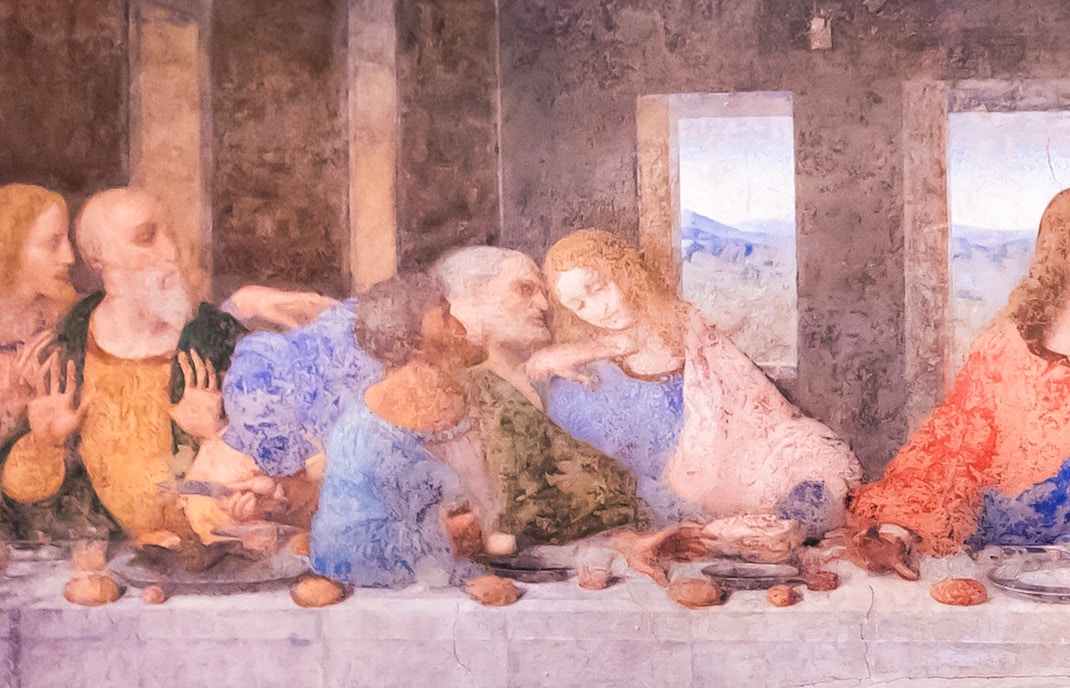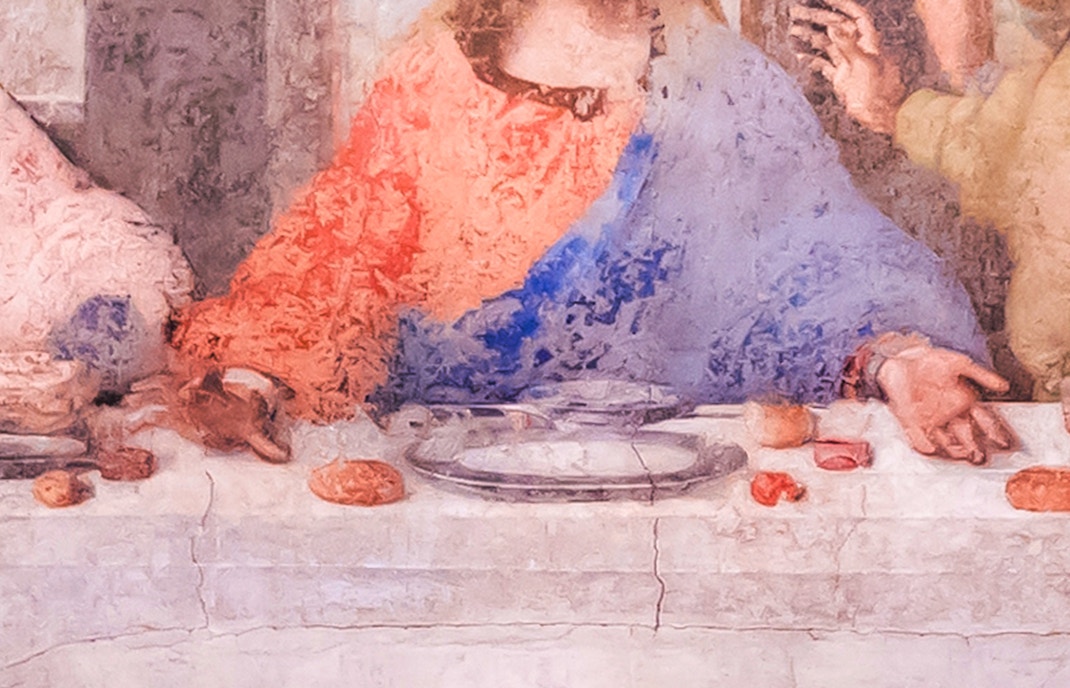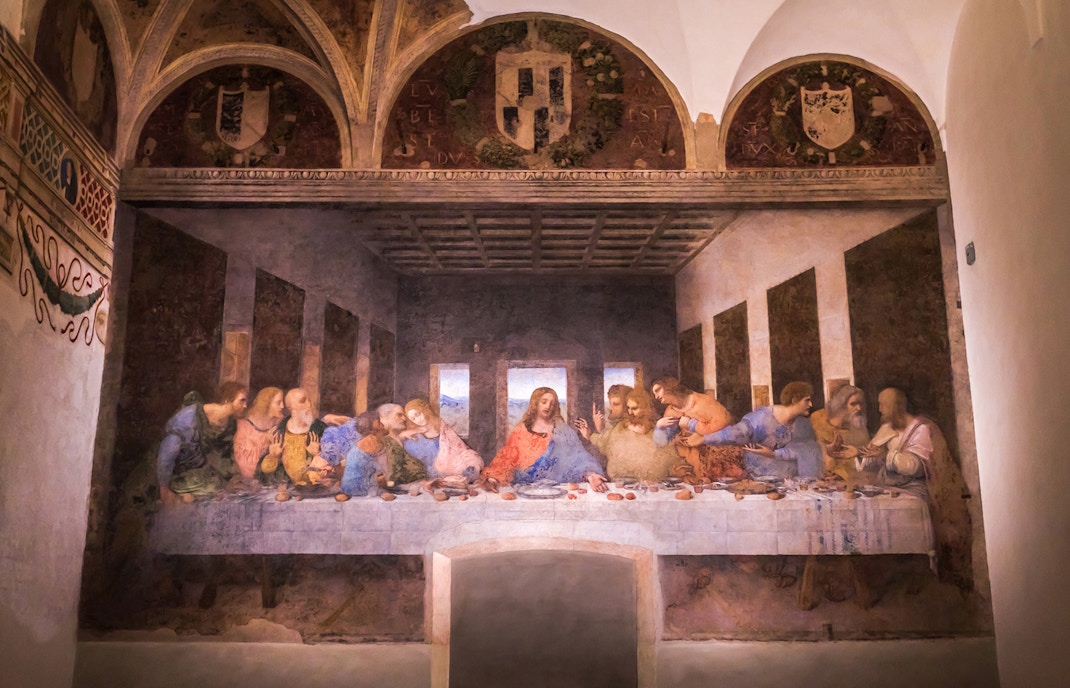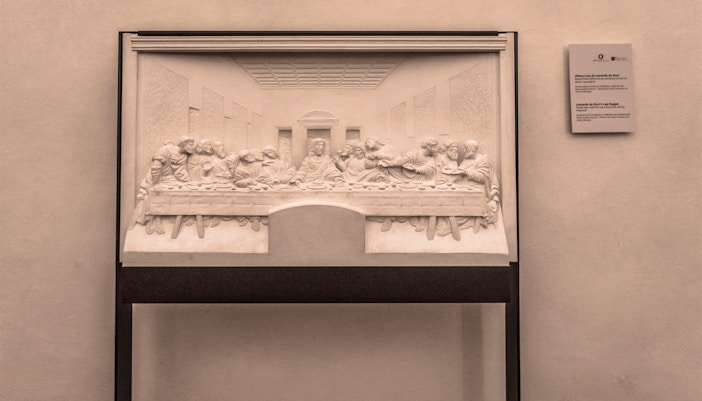In 2007, computer technician and musician Giovanni Maria Pala proposed the idea that there is a **melody hidden within the painting. He suggested that the horizontal lines of the tablecloth that intersect with the bread and the disciples' hands **correspond to musical notes. Played backwards, you get melancholic requiem, meant to be played on a pipe organ, which reflects the somber moment. While the theory highlights the artist's potential for complex symbolism and hidden messages within his work, whether da Vinci deliberately placed these elements as musical notes or they're simply coincidental interpretations remains a debate.






























